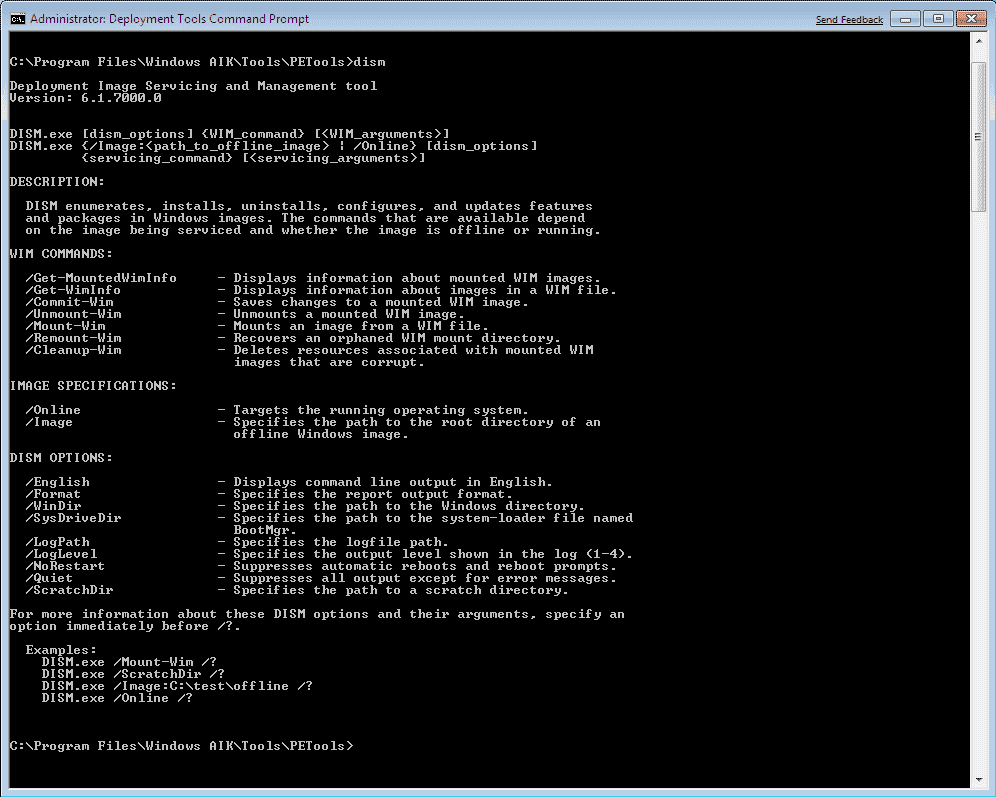DISM doesn’t remove drivers already present after an upgrade install. That’s why most experts, and yours truly, recommend that you use Device Manager to identify devices that need drivers. The dism.exetool allows us to install (boot-critical) drivers into an offline Windows “image”. Note that an offline Windows “image” is nothing special - a regular Windows install is a valid Windows “image”. After a STOP 0x7B, Windows Boot Manager usually sets up fallback boot. DISM command options allow all kind of changes, changing the way Windows will be installed. Drivers can be added or removed, language packs applied to create a multilingual Windows install media, Windows Updates applied to get a new Windows installation to be up to date straight after installation, and so on.
We’ve seen the process of repairing files with SFC and DISM commands on PCs. Using this DISM command alone, you can do further more operations including creating a backup of drives on a Windows 10 machine. But, what is the need to take backup of drivers in Windows 10?
Why should you take Driver Backup in Windows 10?
Dism Install Drivers Online Practice Test
It doesn’t matter whether you’re doing a clean install or an upgrade to Windows 10, you need device drivers to enable OS to work with hardware. In early days, you had to manually search and install drivers for each of your hardware peripherals. In Windows 10 under normal situations, this won’t be a problem because it automatically detects most of the drivers required for your PC to properly work.
Still, there can have situations where Windows 10 unable to find and install some device drivers on your PC. Well, you know how it’s going to affect your PC. Luckily, it’s possible to back-up every driver installed on your PC before installing Windows 10 with the help of DISM command. Here’s how to do this.
Note: This driver backup may not work in Windows 7 systems. So, make sure that you’re doing it from either a Windows 8/Windows 8.1 PC.

- Open Command Prompt as administrator from your Windows 8/8.1 machine.
- Type the command DISM /online /export-driver /destination:C:driverbackup and press enter. Make sure that if the folder Backup isn’t there, you’ve to create one.
- All the exported driver files can be located in the new directory “C:driverbackup” you’ve created.
How to Restore this Driver Backup in Windows 10?
In normal situations, Windows 10 will automatically detect drivers required for your devices and it get installed on your PC. But, certain device drivers may not detect by Windows 10. Here, you can use your backed up drivers from your older operating system. Here are the steps.


- Open Device Manager by searching it in Windows taskbar.
- Find and select the device for which you want to install a driver. If it doesn’t have a driver, it’ll be marked as an unknown device.
- Now, a new window will appear that asks you how do you want to search for driver software. Select the second option “Browse my computer for driver software”.
Dism Add Drivers
- Choose the drivers that you have backed up.
- After updating, click finish to complete the import process.